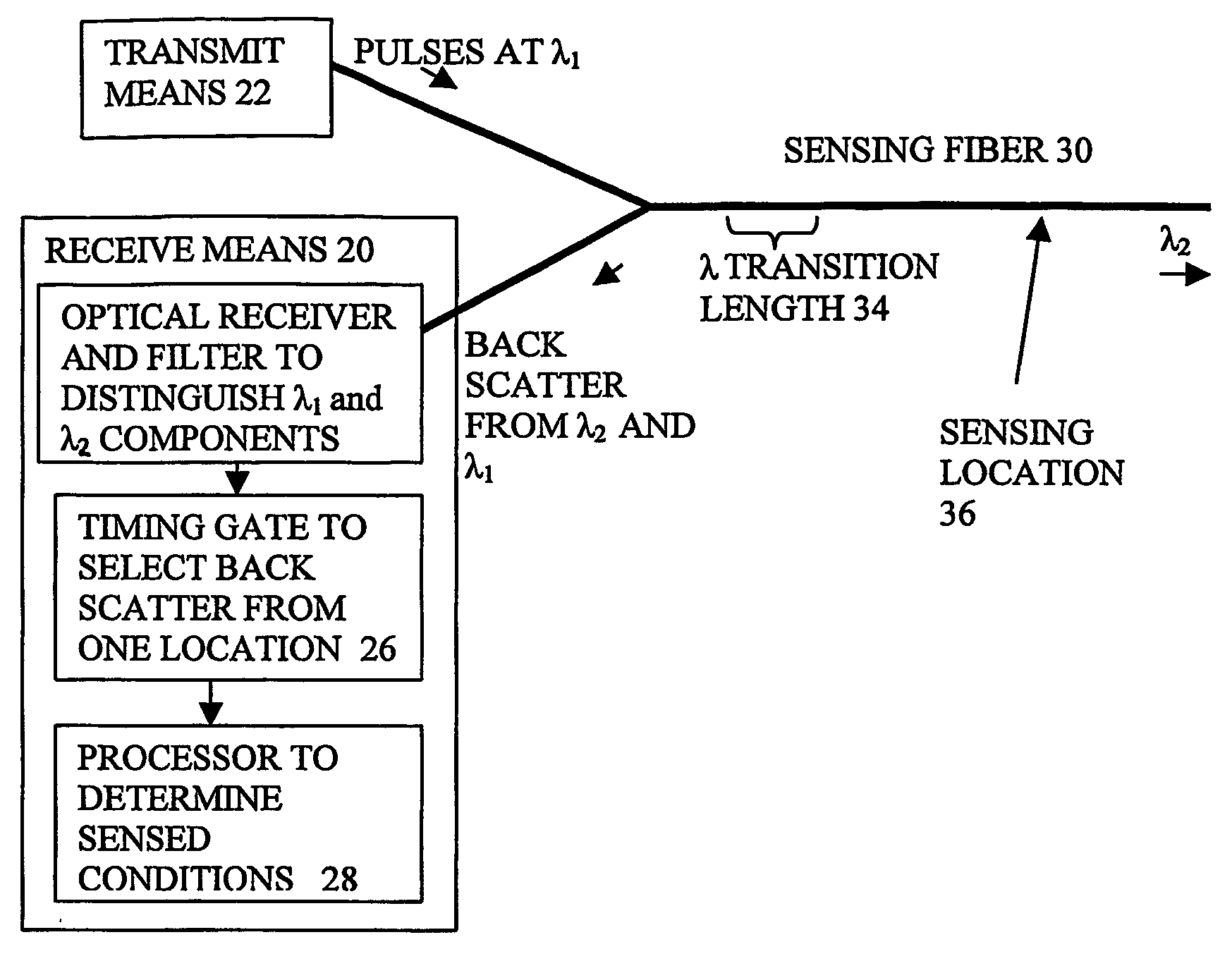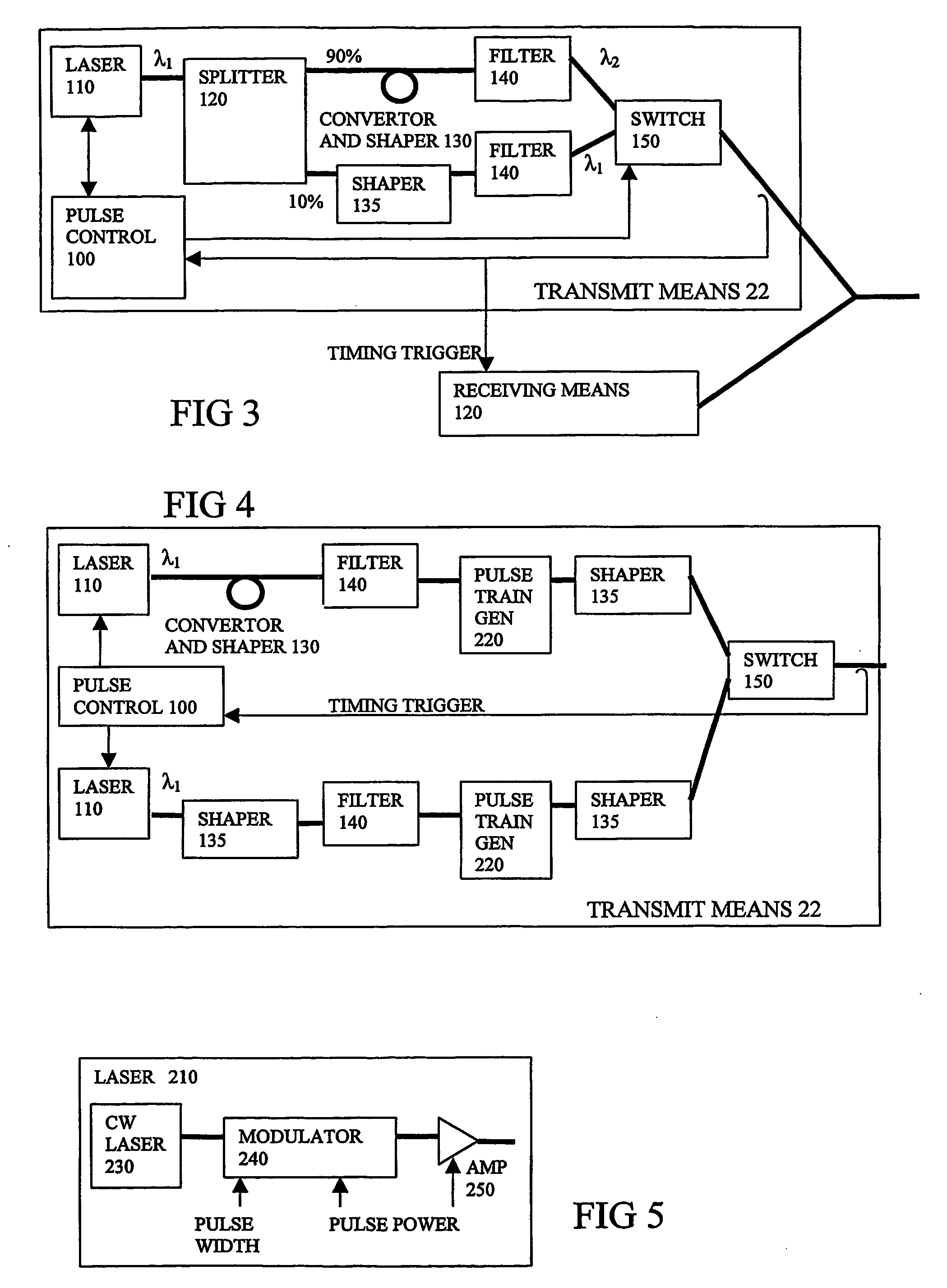Method and apparatus for generation and transmission of high energy optical pulses for long range measurements
a technology of optical pulses and long-range measurements, applied in the field of sensing systems, can solve the problems of limiting the amount of light that can be launched, attenuating the signal, and poor resolution of temperature and loss measurements, so as to reduce interference, improve the signal averaging process, and increase the pulse repetition rate
- Summary
- Abstract
- Description
- Claims
- Application Information
AI Technical Summary
Benefits of technology
Problems solved by technology
Method used
Image
Examples
Embodiment Construction
FIG. 1
[0074]FIG. 1 shows an embodiment of the invention. A transmitting means 22 is coupled to a sensing fibre 30 and sends pulses along the fibre at λ1. The pulses are of sufficient power that SRS builds up along the fibre and causes wavelength conversion during the λ transition length 34. The backscatter from all points of the sensing fibre is separated from the forward going light using conventional techniques, and fed to receiving means 20. This backscatter has Raman Stokes, Raman anti Stokes and Rayleigh components derived from both forward going wavelengths λ1 and λ2.
[0075] The receiving means has an overall purpose of outputting a sensed value or values of the conditions at a sensing location 36 at a given distance along the sensing fibre derived from the backscattered signal. This involves distinguishing the useful parts of the backscatter light and calculating the sensed value. In the example shown, there is an optical receiver 24 with an optional filter for separating the...
PUM
| Property | Measurement | Unit |
|---|---|---|
| distances | aaaaa | aaaaa |
| distances | aaaaa | aaaaa |
| wavelengths | aaaaa | aaaaa |
Abstract
Description
Claims
Application Information
 Login to View More
Login to View More - R&D
- Intellectual Property
- Life Sciences
- Materials
- Tech Scout
- Unparalleled Data Quality
- Higher Quality Content
- 60% Fewer Hallucinations
Browse by: Latest US Patents, China's latest patents, Technical Efficacy Thesaurus, Application Domain, Technology Topic, Popular Technical Reports.
© 2025 PatSnap. All rights reserved.Legal|Privacy policy|Modern Slavery Act Transparency Statement|Sitemap|About US| Contact US: help@patsnap.com



